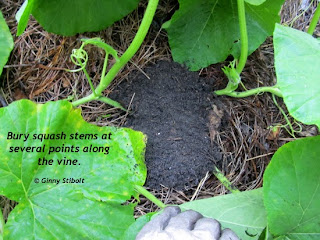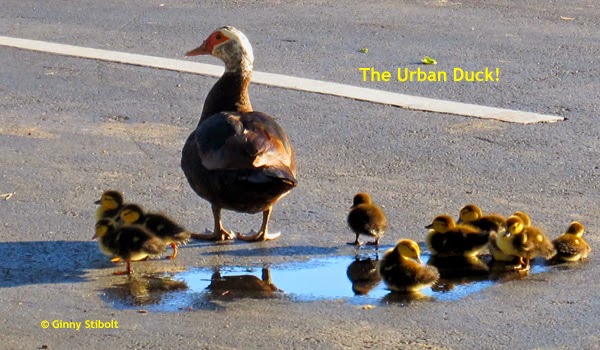To have a more sustainable landscape, you need to listen...
As a long-time gardener with a masters degree in botany, I was certain that I could garden in north Florida when my husband and I moved here in 2004. I've told this story before, but I was shocked and surprised at how wrong I was. Some Florida gardening truths were quickly discovered like how tulips don't grow well here, not even as annuals, because our winters include warm spells so the soil doesn't stay cold enough. Other revelations have taken more time...
 |
| Tropical sage in the herb garden by the kitchen window. |
Listen to the birds & bees
Tropical sage (Salvia coccinea) has monopolized much of my herb garden. I transplant some of it from this location when I plant basil, dill, or one of the other annual herbs, but mostly I leave this native volunteer in place because it attracts hummingbirds, butterflies, several types of bees.I started the herb garden years ago by ripping out the tea roses and various non-native shrubs that were not doing well in this WSW-facing wall. At first everything was in its assigned place, but when the sage arrived, everything changed. I listened to the birds and the bees who needed this beautiful native more than I needed a neat garden.
 |
| Sine this L-shaped garden was not under general irrigation, I turned it into a container garden. |
Container conversion project
An early project in our landscape was my conversion of a "messy bed" filled with Mexican petunias, low growing gardenias, weeds, and other volunteers. I wrote about this project as one of my Adventures of a Transplanted Gardener articles, which are now hosted over on Floridata.com, Troublesome spot? Convert to containers.
Well, it's taken a while, but the other day I switched back to what will probably be a somewhat messy bed, but this time it will be filled with native wildflowers and I shall call it a "cottage garden."
 |
| After removing the pots, I was left with weeds and wildflowers. |
 |  |
| The edge of the lawn needed some updates. | A close-up of the invading ferns... |
 |
| A look down this edge now. |
The ferns are invading!
Every couple of years I work on the lawn edges. Many times the landscape indicates what it would prefer. I've been writing about edges for some time; see my piece "Cutting edges," for earlier lawn removals. You can also listen to my podcast on the topic: Cutting Edges 1/17/08.This time around, the ferns, mostly netted chain ferns (Woodwardia areolata) have crept into the grass, which is sparse in this mostly shady edge. So I pulled the grass by hand in a way that was least disruptive to the soil, moss and the ferns. Later I'll come in with some pine needles or wood chips. If it were closer to fall, I'd wait for the leaves, but I don't want to wait that long.
We still want a mowed area down to the lake, but maybe my husband will have one less trip to make. All because I listened to the ferns.
 |  |
| The point-of-view of this photo starts at the cart in the above photo. The line drawn indicates the proposed new edge of the lawn. | More ferns are invading the grass down here, too. |
Other listenings...
 |
| Sadly, these suckers will never grow into trees because of the red bay ambrosia beetle and its nasty fungal disease. My husband thought we should trim them back since they are so ratty looking. I pointed out that the spice bush swallowtail and other related butterflies rely on trees in this family for their larval food. So all those holes in the leaves means that they have found them. Yay! |
 |
| The Elliot's love grasses make a nice border, but... |
I hope you can hear your landscape when it speaks to you.
Green Gardening Matters,
Ginny Stibolt







































